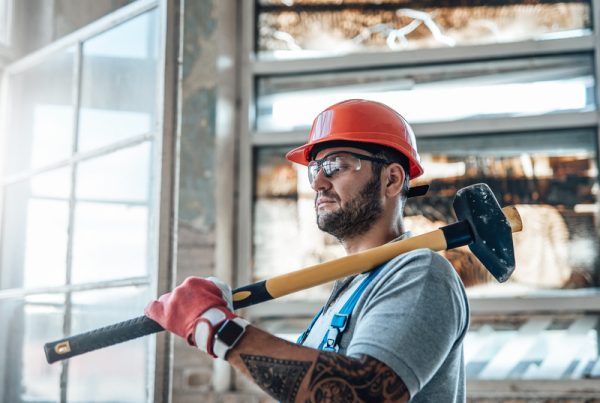The increasing prevalence of high-rise buildings globally necessitates a reevaluation of fire safety measures to ensure the security and well-being of occupants. Following recent catastrophic events, it has become evident that existing fire safety protocols, especially those concerning fire sprinkler systems, may not adequately address the unique challenges these structures present. Enhancing fire safety in high-rises is not just a regulatory compliance issue but a critical component in safeguarding lives and property. This calls for a comprehensive review of fire safety measures, the exploration of innovative technologies, and the strict enforcement of updated codes to enhance structural integrity and occupant safety.
The Triggering Incident
The recent tragic fire in a high-rise building, which resulted in numerous casualties and extensive property damage, has brought to light significant deficiencies in fire safety protocols. The disaster demonstrated that even modern buildings could succumb to rapid fire spread if not equipped with adequate fire suppression systems. The event has not only caused immense emotional and economic distress but also raised questions about the effectiveness of current fire safety measures, prompting urgent calls from the public and policymakers for immediate enhancements to safety regulations, particularly regarding the installation, maintenance, and inspection of fire sprinkler systems.
Analyzing Current Fire Sprinkler Regulations
Despite advancements in building technology, current fire sprinkler regulations often fall short in addressing the full spectrum of risks associated with high-rises. These regulations typically focus on new constructions and overlook the necessity for older buildings to upgrade their fire suppression capabilities. This regulatory gap poses significant risks during fire incidents, as older structures may not perform well under current fire scenarios. Experts in fire safety argue for a revision of these standards to include comprehensive coverage of all buildings regardless of age, ensuring uniform safety across urban landscapes.
Retrofitting Challenges in Older Buildings
Retrofitting older high-rise buildings with up-to-date fire sprinkler systems is fraught with challenges. These buildings often do not meet the structural prerequisites for modern systems, and the costs associated with upgrades can be prohibitively high for building owners. Furthermore, the disruption caused during retrofitting can lead to significant business interruptions. However, the support from specialized insurance products such as Fire Sprinkler Contractor Insurance can alleviate some financial risks associated with these renovations, providing a buffer that encourages building owners to undertake necessary upgrades.
Alternative Fire Suppression Systems
Considering the limitations of traditional water-based sprinkler systems in certain high-rise scenarios, alternative fire suppression systems such as gas-based or foam solutions may provide superior protection. These systems are particularly advantageous in buildings housing sensitive equipment or materials where water damage could be as detrimental as fire damage. The effectiveness of these alternatives must be thoroughly evaluated in real-world scenarios to ensure they offer a viable safety enhancement without introducing new risks.
Importance of Regular Fire Safety Inspections
The role of regular fire safety inspections cannot be overstated in the context of high-rise safety. These inspections ensure compliance with fire safety standards and identify potential risks before they lead to disasters. Recent high-profile fire incidents have led to increased scrutiny of inspection protocols, with calls for more stringent and frequent evaluations to ensure no building falls through the cracks. Compliance with General Liability Insurance requirements can also be verified during these inspections, ensuring that all safety bases are covered.
Evacuation Plans and Fire Drills
High-rise buildings, due to their complex layouts and high occupant density, require meticulously planned evacuation strategies and frequent fire drills. These plans must be clearly communicated to all occupants and regularly updated to accommodate changes in building use or occupancy. Fire drills play a crucial role in preparing residents and workers for emergency situations, making the difference between chaos and orderly evacuation during a fire.
Public Scrutiny and Regulatory Changes
The aftermath of recent fire incidents has not only led to public outcry but also initiated governmental and regulatory reviews of existing safety standards. This increased scrutiny is expected to drive legislative changes, leading to the adoption of stricter fire safety regulations. Stakeholders, including developers, property managers, and insurance firms, need to actively engage with these changes to enhance the safety and compliance of their properties.
The Role of Insurance in Fire Safety
Insurance coverage plays a crucial role in managing risk in high-rise construction and maintenance. Specific policies like Fire Sprinkler Contractor Liability Insurance and General Contractor Auto Insurance provide tailored protections that help manage the unique risks associated with installing and maintaining fire safety systems. Moreover, Artisan Contractor Workers Comp Insurance ensures that workers are protected against job-related injuries, promoting a safer work environment during construction and maintenance phases.
Advanced Safety Measures for Modern Buildings
The trend towards integrating advanced safety measures into commercial buildings is well captured by initiatives that aim to enhance both fire safety and general security. The article Enhancing Security in Modern Commercial Buildings discusses how cutting-edge technology and strategic planning are crucial for the next generation of commercial real estate, focusing on creating spaces that are not only aesthetically pleasing but also robustly safe and secure.
Industry Outlook on Fire Safety
Industry leaders like Pye-Barker Fire & Safety continue to advance the field of fire safety, as detailed in the report Pye-Barker Fire & Safety Projects Another High-Velocity Year. Their commitment to providing comprehensive life safety services is indicative of the sector’s overall trajectory towards more innovative and effective fire safety solutions, which are essential for the evolving landscape of high-rise buildings.
Enhancing High-Rise Fire Safety Protocols
The safety of occupants in high-rise buildings remains a paramount concern that necessitates ongoing assessment and enhancement of fire safety protocols. Addressing the deficiencies in current regulations, improving fire suppression systems, enforcing rigorous inspections, and ensuring effective evacuation procedures are all essential steps towards safeguarding the lives and properties of high-rise occupants. The collaboration between regulatory bodies, the construction industry, and insurance providers will be crucial in fostering a safer urban environment.










